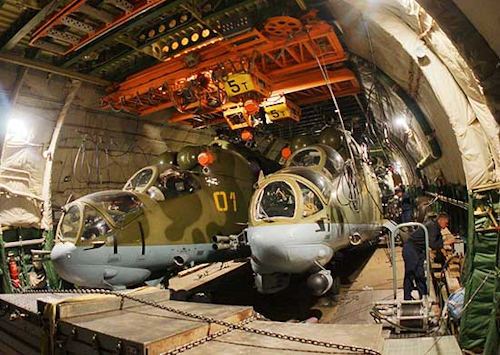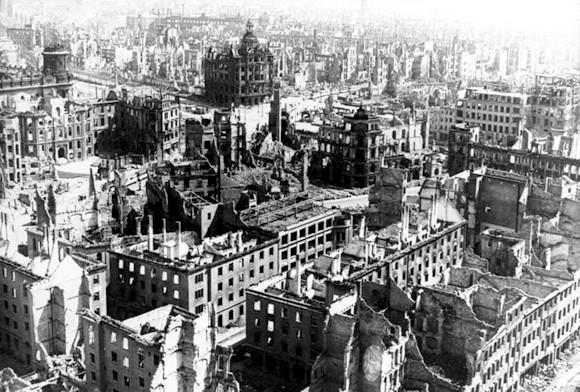As is well known, the purpose of a war is to defeat the enemy in order to make one's interests prevail, that is, to eliminate the opponent to remove the obstacle to the satisfaction of one's needs.
During the German attack on the West in 1940, Hitler prevented his divisions from annihilating the British Expeditionary Force, allowing the Royal Navy (heavily supported by civilian ships) to transport it to England. Subsequently, the OKW would have canceled the operation Sea Lion (the invasion of the British Isles) to prepare for the invasion of the USSR.
In February 1945, the carpet bombing of the city of Dresden (photo) caused the death of at least forty thousand inhabitants. The attack on the German city was part of the Allied strategy (Morgenthau Plan), aimed at the demographic and industrial annihilation of Germany.
As far as modern scenarios are concerned, we could ask ourselves whether, in order to defeat the enemy, his complete annihilation is no longer necessary.
The XNUMXth century BC Chinese philosopher and strategist, Sun Tsu, asserted that the capabilities of a military leader do not lie in winning a hundred battles but in winning the war without fighting.
Furthermore, quoting Clausewiz, we could add that combat, violence and destruction are tools in the hands of politics, which it uses to pursue goals, with the least possible expenditure of resources.

At present, any confrontation (not necessarily military), consists in achieving a certain objective, with the minimum expenditure of resources.
In fact, we are talking about Effects Based Operations theory, EBO (Effects Based Operations), according to which success is pursued through the use of indirect actions aimed at weakening the enemy, rather than based on a comparison based on the loss count. In this regard, we can compare the Vietnam War and the NATO operation in Kosovo in 1999. Where as regards the first, the progress on the field, by the American side, was measured by the number of enemies killed, while for the second, however, the aim was to bring the Serbian economy to its knees by destroying industrial structures.
The latter strategy had been fully successful during the first Gulf War in 1991 when the American-led Coalition air forces carried out the first raids on Iraqi power plants. Such attacks forced the Baghdad regime to block the production of the still efficient ones, in order to avoid their destruction. In this case (EBO concept) the fear of the destruction of the still intact power plants produced a desire to preserve them, effectively eliminating the need for the Coalition to destroy them.
However, Iraq and Serbia are two state realities, to which the simple damage to the structures (both industrial and the provision of services) has inhibited the will to continue the confrontation.
Recent operational theaters, especially in Afghanistan and Syria, have faced an enemy who does not use logistic / industrial structures to operate in the face of western coalitions, who fights in small groups, supported by the local population and driven by strong religious motivations. .
Despite this, the EBO concept can be applied through the synergy of precision armaments, armed drones and special forces cores that allow to significantly reduce the fighting forces necessary to achieve certain results.
 Deploying massive complexes of forces, in addition to being very expensive, involves many risks from an operational point of view, given the proliferation of modern weapon systems also among the militants of the jihadist groups (significant examples were the operations of the IDF in Lebanon in 2006 and to Gaza in 2008). Significant in this regard, the intervention of the Russian Federation in the Syrian civil war certainly marked a break with the past. Indeed, rather than sending massive armored units, Moscow preferred packages of specialized light forces (in addition to an artillery and helicopter support), thus being able to take advantage of greater flexibility.
Deploying massive complexes of forces, in addition to being very expensive, involves many risks from an operational point of view, given the proliferation of modern weapon systems also among the militants of the jihadist groups (significant examples were the operations of the IDF in Lebanon in 2006 and to Gaza in 2008). Significant in this regard, the intervention of the Russian Federation in the Syrian civil war certainly marked a break with the past. Indeed, rather than sending massive armored units, Moscow preferred packages of specialized light forces (in addition to an artillery and helicopter support), thus being able to take advantage of greater flexibility.
The classic distinction between defensive and offensive military operations appears to be completely outdated today, but the need to produce the desired effects emerges, while maintaining the initiative.
The winning element, in today's crisis scenarios, is that at all levels (from the soldier in the operating theater to the political leadership) it must be clear that the key to victory lies in the use of all available resources, including non-military ones, in order to be able to force the opponent to fight outside his own schemes.
Therefore, if not necessarily the annihilation of the enemy, the current theaters of crisis, in order to be definitively pacified, need constant control of the territory, aimed at supporting the civilian population - also by controlling the (often) corrupt local governments - the real key to success. .
Photo: Bensearchiv / US Army / MoD Russian Federation












